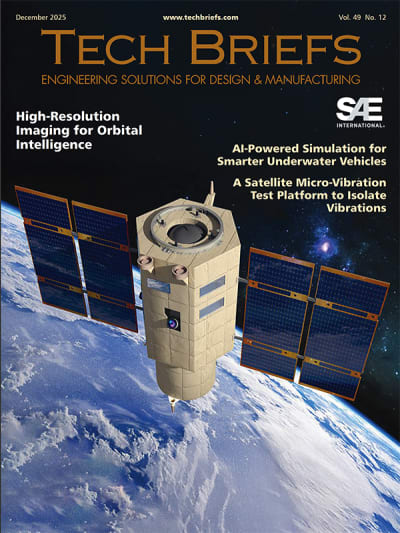Damage-Tolerant Fan Casings for Jet Engines
A&P Technology, Inc., of Cincinnati, a leading manufacturer of braided fabrics for composite reinforcement and advanced technology applications, received a Small Business Innovation Research (SBIR) grant through Glenn Research Center to develop damage-tolerant fan casings for jet engines. Additional collaborators on this project included the Federal Aviation Administration, Ohio State University, and the University of Akron, Ohio. This group effort enabled the rapid development and fabrication of the prototype composite fan cases for direct comparison to the metal fan cases currently used in aircraft engines.
Transcript
00:00:02 more than three thousand years ago the ancient Egyptians braided fibers to make stronger longer-lasting materials today a small company in Cincinnati Ohio is braiding materials for the same reasons what began with candle wicks in developing the equipment to make them has filtered into many other areas even aerospace over the years a and P Technology Incorporated has been
00:00:28 designing and creating materials for many applications such as sporting equipment prosthetic devices and furniture in 2001 a and P partnered with NASA's Glenn Research Center through the Small Business Innovation research or SBIR program their goal was to develop a new braided material for jet engine fan cases if the engines rotating parts particularly fan blades failed the
00:00:51 enclosing strands particularly fan cases play a critical role it's important to contain the debris or the fragments when you have a failed part like that a blade you know a blade either a fan blade compress our blade or turbine blade and if those blades would happen to break off you want to be sure that you can safely contain the debris or the fragments inside the engine so
00:01:14 they don't pose a threat to the either to the other parts of the airplane or to the obviously to the passengers of the airplane for stronger yet lighter fan cases the tea wanted to use composite materials which makes the braiding process trickier composite reinforcement yarns are typically very fragile and so we had to modify the equipment to handle much more delicate fragile yarns there's
00:01:41 a whole variety of techniques associated with bringing together large numbers of fibers to make larger structures as opposed to the commercially available equipment one of the main reasons amv products are unique lies with their highly specialized braiding machines often designed and built by the firm to meet customer needs such as NASA's they were able to adapt a braiding process
00:02:03 and a braiding machine that could make carbon-fiber braid without damaging the fibers and to make it into a specific braid architecture that proved to be particularly impact-resistant when it went into a composite structure working with engine manufacturers GE Honeywell and Williams a and P and NASA designed manufactured and tested fan case prototypes for three
00:02:30 different sizes of engines because the testing has been so successful and the braided composite technology is now being certified by the FAA for new engine fan cases these materials will undoubtedly be used elsewhere on plants the more we learn about how these types of materials and structures perform the more we think we can adapt them to other applications that would have a huge
00:02:55 weight savings benefits it bodes very well for other applications particularly since we've been able to demonstrate to the FAA as well as the customers that the material is repeatable and can meet whole variety of requirements and perhaps even two components for Space Exploration we've worked on a couple of inflatable material applications and notably an airlock that we worked with
00:03:19 the NASA Johnson Center the Egyptians and NASA stronger more lightweight materials from braiding

